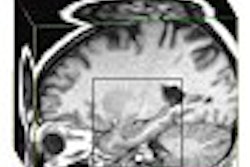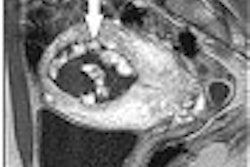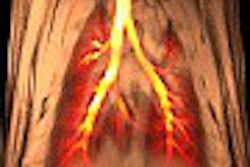Lippincott, Williams & Wilkins, Philadelphia, 2003, $139
In the last two decades, MRI has become the definitive modality for studying the multiple pathologic categories affecting the cardiovascular system -- a relatively short period of time. It’s no wonder, then, that few texts exist, documenting this modality’s current use and capabilities.
The primary authors, both radiologists, acknowledge that the aim of their work is not to cover the history of MRI of the heart and vasculature. And unlike the majority of other books that are written by cardiologists, there is sparse review of the clinical manifestations of cardiovascular disease. Instead, this text is devoted to magnetic resonance and the cardiovascular system, with a focus on diagnosing anatomical and functional pathology.
The book is divided into five sections. The opening section deals with the details and mechanics of MRI and the physiology of the cardiovascular system. The reader should enter this section with a comfortable background in magnetic resonance physics because it is not intended to be an introduction. The following chapters review the physiology/pathophysiology of the cardiovascular system and the evaluation, quantification and peculiarities of imaging this system with MRI.
Sections 2 and 4 review the current practice and findings in MR evaluation of acquired and congenital heart disease. Imaging techniques are reviewed for each category. A brief review of disease entities is provided to familiarize the reader with current understandings and classifications. MR findings and pathology are then discussed for specific sequences.
A major part of section three is devoted to ischemic heart disease. Current evaluation of the cardiac musculature and coronary arteries is presented with thorough discussion of indications and unique benefits of MR, as well as the current and future evaluative applications of this modality. The section also tackles the immediate and long-term affects of coronary vascular disease on the cardiac myocardium.
The final, and most lengthy, category covers vascular diseases. Many readers will encounter topics and techniques common to their practices. The strength of this section lies in the review of the unique diagnostic abilities of MR angiography (MRA), pitfalls in interpretation, and future applications, including MR-guided endovascular therapy.
Through extensive use of excellent images and detailed discussions, Cardiovascular MRI and MRA offers a complete snapshot of current practices and future applications.
By Dr. Daniel ReidmanAuntMinnie.com contributing writer
August 21, 2003
Dr. Reidman is a radiology resident at the Madigan Army Medical Center in Tacoma, WA.
The opinions or assertions contained herein are the private views of the author and are not to be construed as official or as reflecting the views of the Department of Defense.
If you are interested in reviewing books, let us know at [email protected].
The opinions expressed in this review are those of the author, and do not necessarily reflect the views of AuntMinnie.com.
Copyright © 2003 AuntMinnie.com



















